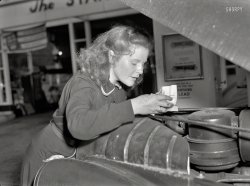
MAY CONTAIN NUTS

Search Shorpy
SHORPY ART

Framed or unframed, desk size to sofa size, printed by us in Arizona and Alabama since 2007. Explore now.
Join and Share
Ad-Free Shorpy
Shorpy is funded by you. Patreon contributors get an ad-free experience.
Learn more.

Recent comments
- Say what??
- Grapes?!
- A Beautiful Moment
- Such joy
- Bethune-Cookman University today...
- Yellow sky at morning
- Side Winder
- Air Quality?
- Sojourner Truth riot
- None were so blind(ed)
- The less famous sister
- Good ol' days?
- Rise and Fall
- Goo Goo Ga Joob
- Ticket Retention
- Not the only one
- Vagaries of War
- Killed by Amtrak
- Back to the Future
- Wanted --
- If you can't stand the light
- Centralized Traffic Control, I believe
- What's really happening
- Heckuva remote control!
- Sometimes — Things Go Bump!
- I SEE THE LIGHT
- Union Switch and Signal Company
- Get That Light Out Of My Eyes
- Eggs. Eggs. Eggs. The Egg Man is Here!
- Foreboding caption
Member Photos
The Shorpy
Print Emporium
Print Emporium
Search Shorpy
Search results -- 30 results per page
- Corner Rooms: 1905
- ... the Norse Room
The Fort Pitt Once considered one of Pittsburgh’s most elegant hotels .
(The Gallery, DPC, Pittsburgh) ... Posted by Dave - 11/14/2015 - 2:05pm -
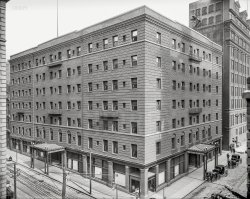
- Seward Park Sequel: 1903
- ... Street route in Manhattan lasted until 1917, while Pittsburgh had this form of transit on Sarah Street until 1923. You can still ... Posted by Dave - 03/11/2022 - 2:42pm -
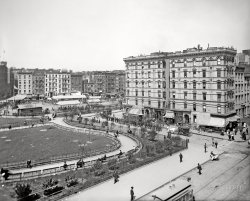
- Big Steel: 1941
- ... of the Allegheny River. Etna is about 8 miles northeast of Pittsburgh.
Farked Again ... Posted by Dave - 08/03/2012 - 10:34pm -
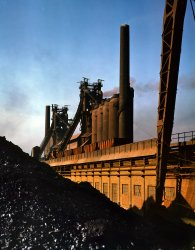
- M.A. Leese: 1926
- ... included buying their equipment.
Advertisement in the Pittsburgh Gazette Times, June 22, 1919:
(The Gallery, D.C., Natl Photo, ... Posted by Dave - 01/22/2012 - 4:32pm -
![M.A. Leese: 1926 Washington, D.C., circa 1926. "M.A. Leese Optician, 9th Street store." Other businesses represented in this mold-spotted street view include a pool hall, Venice Italian American Restaurant, Pressler Bros. haberdashery and Barker "Original System" Bakery. National Photo Company glass negative. View full size.
Beating the dead hatDave said, "If it was the same guy, we'd be able to see through both of his images and not just one. The door behind Mr. Left would register at least as strongly (or faintly) as the body of Mr. Right."
The transparency of the man would be proportional to how long he was in each position. He was standing at the left for a longer time than he was standing on the right. That Mr. Left was in motion I don't think is in doubt; if you look at the close-ups below, you can clearly see the sidewalk through his legs and feet. His hat also has a clearly visible trail as he walks to the right. I think you can also see the line of the building through his right arm.
[By the same reasoning, the apparentness of the building is proportional to how long it's in each position. Thinking solely in terms of how transparent the man is is misleading; the important thing is the relative prominence of each element in each man-building pair. If it's the same guy, the building behind the man on the left would be at least as prominent as the man in front of the building on the right -- if he was standing to the right for 5 seconds, this means the wall behind the man on the left has been exposed to the camera for 5 seconds, plus the time it took him to get from A to B. However this is clearly not the case -- although it's obvious that Mr. Left has moved, the building behind him has been exposed to the camera for just a fraction of the time that Mr. Right has been standing in front of the window. To summarize: The relative prominence of the fainter element of each of the two man-building pairs should be the same if it's the same person. On the right there is very strong evidence of a man in front of the building; on the left, however, there's hardly any trace of the building behind the man. - Dave]
A radio pioneerM.A. Leese established one of Washington's early radio stations, WMAL, whose name incorporated his initials. Today at 630 on the dial, it is the home of right-wing talkers.
[Note the antenna on the roof. - Dave]
Very long exposureThe exposure on this one was so long that the man in the picture had time to turn back around, walk 3 or 4 paces, and then stop to look at the bakery window.
[Those are two people; different hats.]
Hmm. I'm willing to be convinced, but the two men have the same height, the same coat length, the same hands in pockets, the same ruffled sleeves, and the same shades of gray. I see a scarf around Man #1 and a dark spot on the back of the neck of Man #2. The hats are each light colored with a dark stripe. The shoes and pant legs are obscured in Man #2, but is still consistent.
The only inconsistent thing I can see about the hats is that the brim of Man #1 seems upturned and the brim on man #2 seems perhaps too wide and flat. But it could just be the angle and blur of the photo.
His Hat Brimmeth OverIt appears to be raining. The mystery man may have exited the building with hat brim turned up; "click" - first exposure; seen the rain; flattened his brim for maximum rain protection before stepping off; put his hands back in pocket; stepped off; "click" - exposure two. All the while quite unaware of his future stardom on Shorpy, and all the controversy he would cause!
Which Should I BringThat "POOL" sign over the soon to die jewelry store makes me wonder whether I need my pool cue or my swim trunks.
AccessHow did one reach the Italian restaurant, through the haberdasher's store or through the pool hall.
[Take a close look at the passageway next to the jewelry store.]
But isn't that the 'next' building over? They must be connected above the first floor. Thanks
Re: Checking to see if the coast is clear@Quatermass -- You do see a smear... note on the right side of his hat, you see the motion blur, which is stronger while he's turning and starting (less motion) and fades out as he accelerates into his walk.
I see Dave is sticking to his story of the different hat, despite my carefully crafted evidence of everything else being the same (including 90% of the hat).
Kidding aside, I think the coat sleeves are the killer evidence. Besides the identical wrinkly nature, if you look at the right arm, there is an identical "puff" at the elbow.
Thinking about the hat one more time, maybe what I see that Dave doesn't see (or doesn't agree with) is that the top round part of the hat is over the ship on that white sign, obscuring it, making it look like a different hat. If you look carefully, you can see the ghost of the top of his hat where the color is slightly darkened over the sign. I see the same round top with dark band. See pic below, that I created from the original LOC image at max resolution.
[That's not Dave who was taking issue with the comment below. That was our new Comments Czar. As for whether it's one or two people, the hat is beside the point. If it was the same guy, we'd be able to see through both of his images and not just one. The door behind Mr. Left would register at least as strongly (or faintly) as the body of Mr. Right. - Dave]
Antenna sizeMaybe with just 15 watts 15 watts it took that much of an antenna to get them even at a short range (not certain how far apart this store and the transmitter site were then). The article notes the numerous changes in frequency that many stations went thru in the 1920s as broadcasting developed.
Checking to see if the coast is clear@ TimB: I'm pretty sure that's the same guy. It would have to be a double exposure though, or else we'd probably see a smear of him walking over there.
My idea was that he had to look around to make sure the wife wasn't watching, then quickly step over to the bakery to purchase a clandestine eclair.
[But first stepped down the street to buy a new hat.]
Okay, so maybe one of them bought the eclairs and the other is the lookout.
Come to think of it, that might be Herman and Clarence Woolard, of the famed Jelly Roll Gang, who terrorized bakeries up and down the Eastern Seaboard throughout the 1920s. Though history has tended to recall the fanciful exploits of gangsters like Dillinger and Bonnie and Clyde, it's said the Woolard's made off with a lot more dough.
Vision DeteriorationThe mold makes the three windows of Leese's building look like stages of some horrible degenerative eye disease.
The eyes have itFor those not sure what an optician does just take a look in the windows.
Enough already!I'll call Old Man Barker and ask him who was hanging out in front of his shop that day. Sheesh you guys!
Old Man BarkerProbably wasn't at this bakery. The Barker Original System of Bakeries was a sort of franchise, where the manufacturer of the baking equipment would set up a new baker for an investment which naturally included buying their equipment.
Advertisement in the Pittsburgh Gazette Times, June 22, 1919:
(The Gallery, D.C., Natl Photo, Stores & Markets)](https://www.shorpy.com/files/images/SHORPY_32382u.thumbnail.jpg)
- High Noon: 1909
- ... load iron ore into ore boats to take the iron ore to Pittsburgh. Iron mining was and still is a big business in Marquette County. ... Posted by Dave - 07/19/2012 - 10:26pm -
![High Noon: 1909 Circa 1909. "Marquette, Michigan. Front Street." 8x10 inch dry plate glass negative, Detroit Publishing Company. View full size.
Ware roomsPresumably ware rooms are what you find in a warehouse, in this case storing furniture.
What a difference a century makesThe picture of this town 103 years ago is full of life and interesting little moments; boys chatting, someone selling balloons (?), a man leaning on his cane with panache while another just watches the world go by, beautifully dressed women with children shopping -- a myriad of details I am fascinated by. Jump to the same spot in 2012 and ... nothing. Hard to imagine anyone doing Shorpy's wonderful job in the future because what aficionado of history would want to spend time looking a HD closeups of empty streets, cars and maybe a pedestrian or two. Bottom line, one picture is endlessly absorbing, the other totally boring. Makes you wonder about "progress."
Lunch Time at the Ice Cream ParlorIt's noon by the building clock, and the locals are mobbing the ice cream parlor.
Plus 103Between a glitch in Google Street View and the difference in the lenses, it's impossible to capture the same angle - but this is close. A nice assortment of "still standing" and "long gone." (Pedestrians and trolley cars seem to be in the latter category.)
Lots Going OnSo many questions: What's the guy selling that has the kids so interested? Why are some in uniform? Speaking of which, the man across the street (front right) appears to be in a policeman's uniform, but the hat is too informal. Also, he has a cane. Why is there a wooden platform behind him leading to a blank wall? And that kid there can't be doing what he looks like he's doing. Can he?
What kind of rooms?I wonder what kind of rooms are ________RE ROOMS? See the brickwork high on the hotel(?) on the left.
[From the panorama we later published. Now we just have to figure out what it means. - tterrace]
Wooden WallRegarding the wooden wall, that appears to be for a railroad line running underneath the street. You'll see a railroad station to your left, as well as a different street cover along this extent. I believe the wall was to keep people away from the train tracks.
From Merriam-Webster onlineware·room [noun \ˈwer-ˌrüm, -ˌru̇m\] A room in which goods are exhibited for sale. First known use: 1811.
DentistNow that is good product placement for a dentist to open up shop next door to an ice cream parlor. I wonder if he is a partner in both locations.
@jdowling23 Question"Why is there a wooden platform behind him leading to a blank wall?"
The wooden platform is actually a bridge over a set of railroad tracks that lead out to cranes for unloading coal in the Marquette Harbor. The wall is for safety as it was a 16' drop down to the tracks. See attached links for different view of Front Street and the City of Marquette around that time. You can see the same wood bridge in one and the cranes in the other. Also you can see the ore docks that gravity load iron ore into ore boats to take the iron ore to Pittsburgh. Iron mining was and still is a big business in Marquette County. The photo in question was taken standing on the a steel bridge leading to the old ore dock that can be seen in the attached photos.
https://www.shorpy.com/node/12493?size=_original#caption
https://www.shorpy.com/node/12492?size=_original#caption
(The Gallery, DPC, Small Towns, Streetcars)](https://www.shorpy.com/files/images/SHORPY_4a23258a.thumbnail.jpg)
- At Your Service: 1938
- ... along Monongahela River and Boulevard of the Allies. Pittsburgh, Pennsylvania." Photo by Arthur Rothstein. View full size.
... born.
(The Gallery, Arthur Rothstein, Gas Stations, Pittsburgh) ... Posted by Dave - 11/14/2017 - 6:32pm -
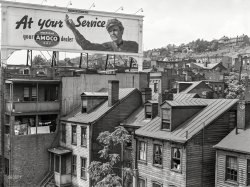
- Uneeda Biscuit: 1911
- ... Byers Pipe Was a product of the A.M. Byers Company in Pittsburgh. Here's a photo of the still standing Byers Mansion - actually two ... Posted by Dave - 03/25/2022 - 2:30pm -
![Uneeda Biscuit: 1911 Detroit circa 1911. "National Biscuit Co." Manufacturers of the once-ubiquitous Uneeda Biscuit as well as its obliviated sibling, the Uneeda Jinjer Wayfer. (Proximity notwithstanding, something tells us that no amount of glib sloganeering will ever turn Byers Full Weight Wrought Iron Pipe into an impulse purchase.) Detroit Publishing glass negative. View full size.
Shorpy is my daily time travelI love this website. Notice the slightly less concise version of "Got Milk?" -- "Do you know Uneeda Biscuit?"
Ubiquitous ... or "ubiscuitous" ??If you were patient and hung around, the next year — i.e. 1912 — you could have a package of "Leap Year Jumbles" (Hopefully NOT available in a titanic-sized box)
And if you were really patient, and hung around for 17 years, you'd see this block (of Woodbridge Street) demolished to provide the entrance for the Detroit-Windsor Tunnel.
Byers PipeWas a product of the A.M. Byers Company in Pittsburgh. Here's a photo of the still standing Byers Mansion - actually two dwellings, one for him, one for his daughter's family - on the former Allegheny City Millionaires' Row. Note the wrought iron gates.
Look Ma, no wires!It's interesting in some photos showing downtown scenes, you see overhead wires crisscrossing all over the place but in the last few Shorpy pictures, you really don't see any! I guess they were buried under the streets.
[There's a smattering of wires here that the Detroit Publishing people retouched out of the negative. - Dave]
Marketing issue resolvedGottaHava Cast Iron Pipe.
(The Gallery, Detroit Photos, DPC, Factories)](https://www.shorpy.com/files/images/SHORPY-4a21050a.thumbnail.jpg)
- The Apparatus: 1923
- ... Clifford Ball Line, which maintains a mail route between Pittsburgh and Cleveland, will be the pilot in the demonstrations which are to ... Posted by Dave - 02/27/2015 - 10:36am -
![The Apparatus: 1923 Washington, D.C., circa 1923. "Unidentified ramp on field" is all it says here. Who can help us categorize this cryptic contraption? 4x5 glass negative. View full size.
Air Mail InboxMy first thought was an aircraft listening device as MaltedFalcon stated. However, upon viewing the enlarged picture, it looks like it might be an attempt to create a pickup hook guide mechanism for picking up air mail. The aircraft would drag a hook behind, which would be funneled up the ramp to hook the mail bag. Granted, I've done zero research on this before posting, so take it for what you will.
Mongo or BustFlash Gordon: The Early Years.
Hearing aidThat is a pre-radar airplane detector. basically a giant earhorn. Which explains the man dressed in pilot garb. Others can be found here.
[The very first photo in that array is from Shorpy. - Dave]
CatapultI say it's aviation-related, based on the pilot's garb. I think it's an early attempt at a catapult. It rotates on its base so that it can point into the wind. And you can see to the left where they've pre-dug the pilot's grave since those springs will be woefully inadequate to launch anything heavier than a paper airplane. He's probably pointing right to the clue that would solve this for us, but I'm not picking it up.
Circus folkLooks to me like that's a seat in the front of that thing. Maybe some early version of the human cannonball?
Attack of the Giant ShrewsHm. Not sure I can swallow the giant listening device explanation: it's not pointed at the sky, and there is no provision for doing that. Also, there's dirt tracked in the open end like somebody walked or wheeled something into it, about which I am clueless. Maybe it listens for dangerous moles and shrews?
Blind Landing BeamCould this be an early attempt on a blind landing beam? I can imagine there are two horns, the other hidden by the visible one and sharing a wall with it. Were there A and N beams sent by the two horns? The frequency would have to have been in the microwave range, based on the small size of the small end of the horn. VERY unlikely to be microwave in that early year.
More likely two very directional acoustic listening horns which could be oriented to point at the aeroplane.
Was this a Naval Research Lab effort?
Hoovering?I would not be surprised to find out that this was taken at Hoover Field, the airfield that predated the construction of the Pentagon. The monument in the background, the guy dressed in pilot's clothing, and the vegetation are the clues. The ramp is fixed-mount, on a circular track so it can be re-positioned to face any direction. It's got a pair of bumper springs at the front. Perhaps it was used to load or unload cargo on early aircraft?
["Monument in the background" is the Lincoln Memorial. - Dave]
Air mailI think GlennG has it nailed. Scroll down near bottom of this link. Not exactly the same, but I think this is an early version. From here.
Here's another viewYup, GlennG nailed it. Here's another view, from the March 1935 issue of Modern Mechanix:
Adams air mail pickup
Washington Post, March 4, 1930.
Members of Congress to See Air Mail Pickup
Members of the Senate and House of Representatives are to be given a close-up demonstration of an air mail pick-up device, the invention of Dr Lytle S. Adams, beginning at 8:30 this morning at Hoover Field.
Trow Sebree, of the Clifford Ball Line, which maintains a mail route between Pittsburgh and Cleveland, will be the pilot in the demonstrations which are to last throughout the rest of the week. Special tests are to be made for the Postoffice Department.
National Cathedral?If I'm not mistaken, apart from the Lincoln Memorial we can also see the Washington National Cathedral (then under construction) on the skyline immediately above the hat of the second man from the left.
(Technology, The Gallery, D.C., Natl Photo)](https://www.shorpy.com/files/images/SHORPY-18544u.thumbnail.jpg)
- Boys of Steel: 1941
- ... known to kill people!"
January 1941. "Houses and Pittsburgh Crucible Steel Company in Midland, Pennsylvania." Medium format ... the Ohio River from Midland. If you've ever flown into Pittsburgh and noticed two cooling towers about 30 miles northwest of the ... Posted by Dave - 12/20/2018 - 10:00am -
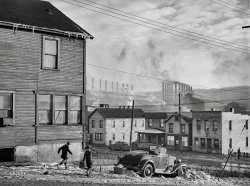
- Tri-County Co-op: 1940
- ... summer and winter, when we went to the Diamond Market in Pittsburgh! I remember wearing hat and white gloves to wives' club luncheons ... Posted by Dave - 05/14/2009 - 1:37pm -
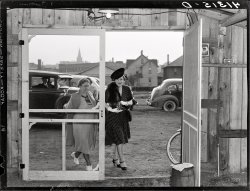
- Steeling Home: 1941
- ... ride the 16A - Aliquippa bus to and from work in downtown Pittsburgh. Routes have changed since then. I'm not even sure the buses still ... Posted by Dave - 04/04/2022 - 5:30pm -
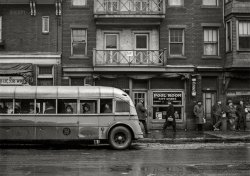
- Shy Hi: 1938
- July 1938. "Steelworker's son. Pittsburgh, Pennsylvania." 35mm nitrate negative by Arthur Rothstein for the ... full size.
(The Gallery, Arthur Rothstein, Kids, Pittsburgh) ... Posted by Dave - 09/29/2020 - 2:41pm -
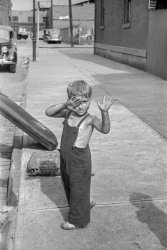
- The Barber of Harrisonburg : 1941
- ... Update on the Friddles. I found this article in the Pittsburgh Press, dated Aug 16, 1932.
"Harrisonburg, Va - The barbers are ... Posted by Dave - 02/22/2012 - 5:54pm -
![The Barber of Harrisonburg : 1941 January 1941. Harrisonburg, Virginia. "Shenandoah Valley. The Valley State Employment Service is aiding in the tapping the skilled labor resources of the Valley. These signs have been widely distributed. This one is in the center of Harrisonburg." Medium format negative by John Vachon. View full size.
The face of a sageA good barber, like a good bartender, always seems to have a demeanor that exudes adroitness and wisdom.
Cold footI hope that baby's mother figured out where his other shoe had fallen off! It was January and most people could only afford one pair of shoes that fit a little one at a time!
[Possibly a keepsake of the barber's? A child or grandchild's baby shoe, perhaps, placed where he'd frequently see it. - tterrace]
Yeah, I thought of that possibility, too! Remember how people used to have baby shoes put into bronze, with a frame for a picture of the baby, and displayed on the piano or some kind of table? I still have the first shoes of all of my kids.
I wonderif the Virginia SES is still hiring?
Cold day in JanuaryNotice the ice on the barber pole.
The Barber of Harrisonburg: 1941According to the 1930 census, and 1942 WWII draft registrations, the Friddles were Elmer, Marlo, and Hugh. In 1941, Elmer was 52, Marlo was 49, and Hugh was 45. So which one of them is standing in the window?
Ars Gratia ArtisVachon was more interested in taking a shot of the barber than of the sign, if his choice of focus is any indication.
Barber FriddleUpdate on the Friddles. I found this article in the Pittsburgh Press, dated Aug 16, 1932.
"Harrisonburg, Va - The barbers are up in arms here because the Chamber of Commerce wants all residents to let their beards grow for three weeks.
The beard-growing campaign was started by the Chamber in preparation for the pageant in September commemorating the 200th anniversary of the settlement of the Shenandoah Valley.
Barber Hugh L. Friddle threatened to take legal action, alleging restraint of trade."
He Wants Them, TooSince he's standing at the window with his hands in his pockets, I'll bet he would love to see a few "carpenters" and "skilled mechanics" come in for a shave and a haircut!
Don't Fiddle with Friddle"Barber Hugh L. Friddle threatened to take legal action, alleging restraint of trade."
That Hugh looks like a no-nonsense guy.
(The Gallery, John Vachon)](https://www.shorpy.com/files/images/SHORPY_8b08998u.thumbnail.jpg)
- Dog Wash: 1943
- September 1943. "Pittsburgh, Pennsylvania. Bus serviceman washing a coach which has just come in ... bus.
(The Gallery, Cars, Trucks, Buses, Esther Bubley, Pittsburgh) ... Posted by Dave - 08/27/2014 - 9:27am -
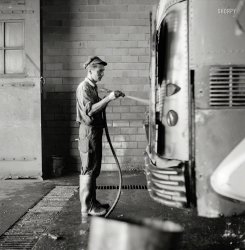
- Outing Equipment: 1920
- ... he filled a like position for the bureau of mines in the Pittsburgh district.
A 150-ton hydraulic press has been installed for ... Posted by Dave - 11/10/2015 - 10:24am -
![Outing Equipment: 1920 Washington, D.C., circa 1920. "National Service Co. front, 1610 14th Street N.W." Home of 24-hour tire service. National Photo Co. glass negative. View full size.
Seal of ApprovalThese days, we rotate our tires every 6000 miles. So much for the 6000 mi guarantee!
Then and NowView Larger Map
Roadside Service: 50 cents
Washington Post, Apr 6, 1919
24-Hour Tire Service Begins
J.H. Robison Head of Company
Installing Apparatus for Heavy Work
Twenty-four-hour tire service is something new to Washington. It has just been introduced by the National Service Company, which has opened a tire store at 1610 Fourteenth street northwest for both solid and pneumatic tires.
J.H. Robison is active head of the new company, which is specializing on the Firestone line of tires and tubes. Mr. Robison has been for a number of years connected with the American University in the capacity of purchasing agent. Previous to this he filled a like position for the bureau of mines in the Pittsburgh district.
A 150-ton hydraulic press has been installed for handling the sold tire work. There is also set up an oxacetylene welding outfit for cutting off old tire bands and tire bases from wheels fitted with the pressed-on type of solid tires. A service wagon, specially designed, with an overhead trolley and chain hoist for handling heavy wheels, is in operation.
For the pneumatic tire business a complete vulcanizing plant is being installed and a service wagon that will answer telephone calls from anywhere in the vicinity of Washington, night or day, is on the streets.
1920s Taggers!Apparently, graffiti was a problem back in 1920, as well. Take a close look at the lamppost. Danged whippersnappers!
Free AirProprietor: "That'll be fifty cents for the tire fill."
Customer: "I thought the air was free."
Proprietor: "It is but there's a non-waivable atmosphere-to-tire transfer fee."
P.S. The lady in the window is reverse trick of the eye - she's real but looks like a cardboard picture.
[She is covered with mold (on the emulsion, at least), which gives her that washed-out look. - Dave]
Some things never changeI have a fondness for company logos that have remained in use for decades. The Firestone logotype hasn't changed in at least 90 years. That's a good one.
Auto BedsI guess Motel 6 leaving the light on for you wasn't around yet!
Dapper CasperThe ghost in front of 1612 appears to have had his shoes shined.
ChillinI like the milk bottle on the window ledge -- cheaper than buying an icebox, I guess.
(The Gallery, Cars, Trucks, Buses, D.C., Natl Photo, Stores & Markets)](https://www.shorpy.com/files/images/28881u.thumbnail.jpg)
- Brownsville: 1938
- ... southwestern Pennsylvania, and the nearest "big" city is Pittsburgh.
It's how you finish The comment by dddlensman triggered ... Posted by Dave - 11/05/2020 - 11:18am -
![Brownsville: 1938 1938. "Shenandoah, Pennsylvania. Miner's home in the Brownsville sector." Medium format acetate negative by Sheldon Dick for the Farm Security Administration. View full size.
RawSo when was paint invented?
Cuteness beneath the corbelsThat's a darling smile shining from the sweet face of the elder of the two tots in the upper left-hand window. This place looks to be pretty nice given the situation. Madame behind door on the right cared enough to put a pretty fringed shade in the window of said door. I hope it was warm within those walls when the winter winds blew.
Pre lawyer days.Injuries possible everywhere you turn.
Narrow StreetsI "drove" around Shenandoah, and found some of the narrowest streets I've seen. Maybe someone can tell me the reason for this.
Single or Duplex?Is this a single family residence or for two families?
2 sets of stairs
2 entrance doors
2 doors to what is probably lower cellar area(s)
But only 1 of something that could be a mailbox next to the left entrance door.
How many families could live in one house.It could be upper and lower apartments or one side is a smaller apartment for a smaller family. There is a side door on at least one side so the building could be divided into even smaller spaces or rambles on like the house on the left. It isn't clear if these are company homes which weren't known to be overly generous to employees.
Paint, shmaintLooks like an example of the saying, "Too poor to paint, too proud to whitewash." Even so, they appear to have done what they could in upkeep. I would hazard a guess that the home's residents were tenants rather than owners, and were, thus, at the tender mercies of the landlord as far as painting and such.
My mum's family was from BrownsvilleI watched the town board up businesses throughout the late '60s and '70s. It was nearly a ghost town.
Always knew I was close to Grandma's house when saw Nemacolin Castle.
[That's a different Brownsville (scroll up). - Dave]
Shenandoah, birthplace of Tommy and Jimmy DorseyI am surprised our dedicated Shorpy sleuths did not dig deep enough to reveal this fact.
Brownsville vs. Brownsville SectionThis photo shows the Brownsville section of Shenandoah, which is in Schuykill County, in the eastern half of the state. The nearest city of size is Allentown. The Brownsville with Nemacolin Castle is in Fayette County, in southwestern Pennsylvania, and the nearest "big" city is Pittsburgh.
It's how you finishThe comment by dddlensman triggered my memory of visiting and photographing the very beautiful gravesite of Tommy Dorsey, "The Sentimental Gentleman," on November 1, 2019, at Kensico Cemetery, Valhalla, New York. Incidentally, the page lists his place of birth as Mahanoy Plane, Schuylkill County (close enough):
https://www.findagrave.com/memorial/292/tommy-dorsey
(The Gallery, Kids, Mining, Sheldon Dick)](https://www.shorpy.com/files/images/SHORPY-8c02374a.thumbnail.jpg)
- Loving Cup Lovelies: 1921
- ... wore. My mother took my older sister and me shopping in Pittsburgh, Pennsylvania. What I noticed was the uncomfortable clothing that ... Posted by Dave - 07/06/2018 - 10:16pm -
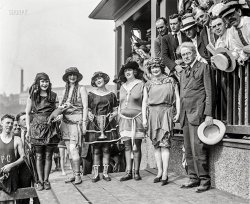
- Beer Boulevard: 1938
- ... the early 2000s, I used to ride the 16A Aliquippa bus into Pittsburgh. That's probably an early version of the 16A in the old photo.
... Posted by Dave - 11/26/2017 - 12:49pm -
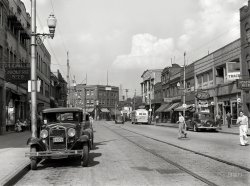
- Beaucoup Bridges: 1938
- July 1938. "Looking north. Monongahela River, Pittsburgh, Pennsylvania." Medium format acetate negative by Arthur Rothstein ... Liberty Bridge -- Vehicle traffic from the south hills of Pittsburgh from 1928 to present.
5. South 10th Street (Philip Murray) Bridge ... Posted by Dave - 09/10/2020 - 9:38am -
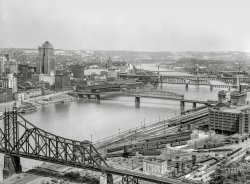
- Captive Cacti: 1905
- Pittsburgh circa 1905. "Cacti, Phipps Conservatory, Schenley Park." The Devil's ... glass negative. View full size.
(The Gallery, DPC, Pittsburgh) ... Posted by Dave - 10/12/2014 - 1:16pm -
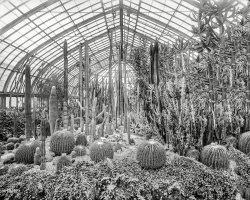
- The Gospel Wagon: 1900
- ... At least there not out knocking on your door during the Pittsburgh Steeler games.
Progressive? What does one sell in a ... in the building: Erie; Pennsylvania; Buffalo Rochester and Pittsburgh; Chicago and Northwestern, and Nickel Plate. There may be more, but ... Posted by Dave - 09/16/2017 - 9:43am -
![The Gospel Wagon: 1900 Buffalo, N.Y., circa 1900. "Ellicott Square Building." At the time of its completion 1896, the largest office building in the world. Our title for this post comes from lower down (and higher up). 8x10 inch glass negative. View full size.
I like the Gospel Wagon idea..At least there not out knocking on your door during the Pittsburgh Steeler games.
Progressive?What does one sell in a "progressive" store?
["Progressive" as in the sense of "modern," as in this article, which seems unintentionally prescient. -tterrace]
Phoenix Reflected The Phoenix Brewery, (a very popular name used through out the country), operated in Buffalo from 1887 to 1920, closed for prohibition from 1920 to 1934, operated again from 1934 to final closing in 1957. The title refers to the "BEER" reflection in one of the store windows across the street to the left.
Signs of the TimesThere are at least five separate railroad ticket offices in the building: Erie; Pennsylvania; Buffalo Rochester and Pittsburgh; Chicago and Northwestern, and Nickel Plate. There may be more, but they're too fuzzy to read. Also like the interesting phonograph store selling Columbia and Edison cylinders and players (no they were not compatible).
Ministering On Main StreetThe Ellicott Square Building (283-309 Main Street) was completed in mid-1896 and still stands today. Six workmen died during the building's construction. Across the street was 304 Main, home to Palmer's Florist and the Albany Dental Parlor. “Sam. Welsh's Progressive Store” was the cigar store of brothers Samuel and Charles E. Welsh. They opened their 311 Main Street store in November of 1899, having previously operated the Progressive Cigar Store at 331 Main Street. Perhaps the Gospel Wagon Association thought that those buying cigars and phonographs needed to be exposed to something a little more “redeeming.”
Sidewalk Sign DesignI am interested if anyone knows the purpose of the signs placed along the sidewalks, which seem to be advertising above, and vertical bars of some sort below. Perhaps stops for public transportation, but why so many? And what are the bars for? A classic Shorpy mystery for me.
[A rare sight in early Shorpy street scenes: a bicycle rack, like the one in use here. -tterrace]
Future office of Wild Bill DonovanWhen this was taken, a local Buffalo teen named William Joseph Donovan was in St. Joseph's Collegiate Institute, with big dreams. He would enroll in Niagara University for two years before transferring to Columbia, where he received a B.A. and law degree. Returning to his hometown, "Wild Bill" went into private practice with Love & Keating in 464 Ellicott Square. He would remain there until he scratched the itch to form his own law firm in 1912. O'Brian, Hamlin, Donovan & Goodyear moved into the brand-new Iroquois Gas Building. Donovan's office grew dusty as he devoted more and more time to reawakening New York's militia and turning it, by 1917, into the "Fighting 69th" New York Infantry. As its colonel, Donovan became nationally famous, leading to a series of positions that would culminate as his appointment during World War II to begin the Office of Strategic Services - the forerunner of the CIA.
(The Gallery, Bicycles, Buffalo NY, DPC, Stores & Markets)](https://www.shorpy.com/files/images/SHORPY-4a29267a1.thumbnail.jpg)
- Gasoline Alley: 1912
- ... Hickman, in 1914, advertised his small vehicle in East Pittsburgh which he called the Auto-Bob and offered for sale at $130 in kit ... Posted by Dave - 08/09/2012 - 7:42am -
![Gasoline Alley: 1912 Washington, D.C., or vicinity circa 1912. "Automobile." One of three photos of a curiously tiny motorcar. View full size. 5x7 glass negative, National Photo Co.
PlumbingI like how the front axle has a pipe tee as its steering element.
Old Fashioned?Hah! Meet the car of tomorrow.
HomemadeI wonder where they put the radiator on this one.
[There is no radiator. - Dave]
CyclecarI wish I knew the make of this cyclecar, but I don't. Cyclecars were a bit of a fad for a few years in the early 'teens. Their economical operation would be welcome again today.
Auto-Bob? A 1912 issue of Popular Mechanics has an ad for the Auto-Bob, a car kit with a 10 hp four-cylinder air-cooled engine.
[From the Conceptcarz website: "Jack Hickman, in 1914, advertised his small vehicle in East Pittsburgh which he called the Auto-Bob and offered for sale at $130 in kit form. A fully assembled example was just $150." - Dave]
Fan ClubSo it has a fan, but no radiator? Very odd. The original Honda Civic also ran on a motorcycle engine, but I think it was water cooled, too. I don't recall the original VW bugs having fanblades. At least it's bigger than that one-person near toy we saw in an earlier post.
[Being air-cooled, the motor (below) has no radiator. The boxer engine in the VW Beetle was fan-cooled from the start; most air-cooled car engines have fans. The original Honda Civic had an inline four, not a motorcycle engine. - Dave]
HondasIt was the precursor to the Civic, the Honda 600, that had a 2 cylinder 600 cc motorcycle engine, water cooled.
(The Gallery, Cars, Trucks, Buses, D.C., Natl Photo)](https://www.shorpy.com/files/images/27833u_0.thumbnail.jpg)
- Lunchbox Brigade: 1941
- ... billed itself as a Southern drink, although it was made in Pittsburgh.
I'll take a dozen Candy cigars, that is.
Robert De ... I stumbled upon this interesting want ad from the Pittsburgh Press, 1936: "German, Hungarian, Bohemian, Polish only need apply." ... Posted by Dave - 02/16/2020 - 12:11pm -
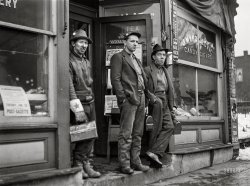
- National Airport: 1941
- ... merger of two smaller carriers, it was originally based in Pittsburgh but moved its headquarters to Washington National Airport in 1941. ... Posted by Dave - 03/26/2014 - 1:23pm -
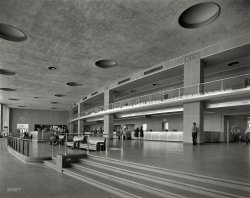
- Aerial Omaha: 1938
- ... Omaha, St. Louis and the Gateway Arch, Kansas City, Pittsburgh) and one whole state (Oklahoma, although particularly Tulsa).
... Posted by Dave - 09/14/2017 - 9:05pm -
![Aerial Omaha: 1938 UPDATE: Our vantage point for this view north along 14th Street is the Woodmen of the World tower at 1323 Farnam.
November 1938. "Omaha, Nebraska." Gateway to the West. Medium format negative by John Vachon for the Farm Security Administration. View full size.
FansAnyone aware of what the contraption is on top of the building on the left. I see fan units. Was this an air conditioning system? If so it is very narrow.
Three Corner TavernsInteresting to note the small corner taverns in the Omaha photographs: in the “Omaha Suds” image, in the Theodore's Place image, and the Oaks Tavern in this image. Three corner taverns, each about the same size and height, although some more decorated than the other. I wonder how many others existed?
Across the street is the Paris Bar and Billiards. Oaks and Paris advertised together.
What Depression?For a small city during the worst of the later Depression years, this photo portrays an impressive proportion of late model vehicles. As opposed to the trucks, the great majority of the cars seen here are within 3 or 4 years of age if not newer -- a mix probably not excelled in most U.S. localities today.
Brand new Ford TudorThe car almost directly in front of the "Nebraska" is a new 1938 Standard Ford V8. I've had one of these since the late 1970's. Once considered the ugly duckling of the 30's by almost everyone is now kinda good looking. Kinda.
Scorch marksSo what was the commercial establishment that burned at the corner of 14th and Capitol? Whatever it might have been, the fire appears to have thoroughly gutted the place.
Pay no attentionI'm assuming that this picture was taken from an airplane, so it's interesting that none of the many people on the street are looking up at the photographer. It seems like an airplane flying low over the downtown area would attract a lot of attention!
[The photo was taken from the Woodmen of the World building at 1323 Farnam Street. - Dave]
Gateway to the WestJust a minute, that nickname belongs to my native city, Winnipeg, Manitoba. But wait, Wikipedia points out that it also refers to no fewer than 6 cities in the US (Fargo, Fort Wayne, Omaha, St. Louis and the Gateway Arch, Kansas City, Pittsburgh) and one whole state (Oklahoma, although particularly Tulsa).
Location, Location, Location?I believe this photo was taken from a building on the southeast corner of 14th and Farnam. In an aerial photo from the early 1950s I can see a tall building located at that corner.
Furthermore, in that aerial photo I can clearly see the Hotel Fontenelle a few blocks to the west at 1806 Douglas and I can positively identify the fronts of the buildings in the 1300 block of Douglas where Palace Billiards and the Oaks Bar were.
[You are correct about the location (my first guess, the Hotel Fontenelle, is on the wrong block). Which means our vantage point is the 19-story Woodmen of the World headquarters, at the time of its completion in 1912 the tallest building between Chicago and the West Coast. - Dave]
No Apartments AvailableThe three story brick building being demolished was an apartment building offered for sale in January 1937. Directly across the street from it was the “Hummel Auto Shed” and the Omaha World Herald delivery truck garage and parking lot and the vacant space diagonally across the street was the site of the Jefferson Hotel, demolished in 1935.
Win some, lose someBetween the Oaks Bar and the Nebraska theater is a campaign office with banners for 19938 candidacies of (James T.) English for (Douglas) County Attorney, and (Frank) McGrath for (Douglas County) Clerk of Court. English won, and later became a state-court judge. McGrath, an incumbent mired in scandals, lost.
(The Gallery, John Vachon, Omaha, Railroads)](https://www.shorpy.com/files/images/SHORPY-8b14207a.thumbnail.jpg)
- And Now a Word From Our Sponsor: 1911
- ...
No. 6 West 33rd St., N. Y. City.
218 Oliver Ave., Pittsburgh, Pa.
1031 Boardwalk, Atlantic City.
1543-45 Boardwalk, Atlantic ... Posted by Dave - 10/18/2012 - 8:36am -
![And Now a Word From Our Sponsor: 1911 Atlantic City circa 1911. "Bathing in front of the Traymore." As well as giant billboards advertising various products both funct and defunct. 8x10 inch dry plate glass negative, Detroit Publishing Company. View full size.
Kondo & Co.Kondo & Co. Importers of General Japanese Goods. Stores:
No. 6 West 33rd St., N. Y. City.
218 Oliver Ave., Pittsburgh, Pa.
1031 Boardwalk, Atlantic City.
1543-45 Boardwalk, Atlantic City.
The Oriental Economic Review, November 10, 1910.
Kondo & Co., who own one of the most prosperous shops in Atlantic City, was founded by Sajuro Kondo, who came to Atlantic City in 1896 from Boston, Mass., as a representative of Yamanaka, Amano & Co. He opened a shop of his own in 1900, beginning with a capital of only $1,600, and has achieved his present very positive success by the sheer force of his business acumen.
A night scene of this section of the boardwalk at Shave Yourself: 1910 where the signage at 1543-45 Boardwalk is "The Tokio." I can't figure out which of these photos came first.
Vaniman's airshipGood contemporary summary of the Vaniman Akron disaster here. More recent word is that the exhaust valves meant to decrease chances of explosion of hydrogen airships may have contributed to the disaster 15 min into its transatlantic flight 1000-2000ft aloft, killing 5 people.
"See Shredded Wheat made"Well, that's the height of Edwardian excitement, I guess; a far cry from the entertainment offered in Atlantic City these days. I bet those large signs built on frameworks were all lit up at night.
See Shredded Wheat MadeNow THAT'S entertainment!
Vaniman's AirshipThe sign advertising "The Wreck of Vaniman's Airship" dates the photo to after July 2, 1912.
Shredded Wheat Fans Unite!I am the only creature in my house that buys and eats shredded wheat. Those biscuits must be properly splattered with milk or they'll go soggy on you. It takes years to perfect the perfect technique but the effort is well worth it. I would give anything to see it made up close and personal. Oh, the Bucket List just keeps growing!
The bride of 40 years, the kids and the grandkids think I'm nuts but what do they know?
Must askWhy is the Gillette sign facing one way in the daytime photo and the other way in the nighttime photo brought to our attention by stanton_square? Has the sign been moved?
[It's also facing the other direction in this one. - tterrace]
Smoke 'Em If You Got 'EmHelmar is Ramleh spelled backwards. Ramleh or Ramla, is a city founded in the Eighth Century. Egyptian cigarettes were deemed more exotic than other Tailor Mades (as opposed to rolling your own). Attached is a WW1 Era ad flacking the smokes to be sent to our boys in uniform. Cigarette advertisements, highlighting Service Men and Women, were also popular during WW2. The Army 'K' Rations (meals ready to eat) contained a four pack of popular brand smokes.
Million Dollar PierIn the background is John Young's Million Dollar Pier, seen here, here, here and perhaps best of all here.
(The Gallery, Atlantic City, DPC, Swimming)](https://www.shorpy.com/files/images/SHORPY_4a25625a.thumbnail.jpg)
- Meet the Shortses: 1938
- ... worker, natty with his outfit. In other Shorpy pics of Pittsburgh and Aliquippa (like a few days ago), the housing looked very ... Posted by Dave - 11/15/2017 - 6:15pm -
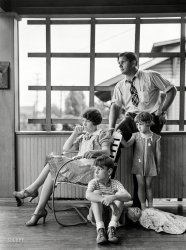
- Trenton Pinsetters: 1909
- ... have been in the 1930s in or around Clairton, PA, south of Pittsburgh. Later he would work as a hod carrier and parking cars in a parking ... Posted by Dave - 12/10/2007 - 3:11pm -
![Trenton Pinsetters: 1909 December 20, 1909. "Boys working in Arcade Bowling Alley, Trenton, New Jersey. Photo taken late at night. The boys work until midnight and later." Photograph and caption by Lewis Wickes Hine. View full size.
Interesting...mix of regular and duckpin bowling on adjacent lanes.
Denny Gill
Chugiak, Alaska
Duck pinsMy Dad told us kids that he once worked in a bowling alley setting duck pins. Didn't say how much he was paid or anything else about this job. This would have been in the 1930s in or around Clairton, PA, south of Pittsburgh. Later he would work as a hod carrier and parking cars in a parking garage before joining the Marines in 1940. He had a lot to say about these jobs.
Joe Bartolini
West Columbia, SC
PercussionThose duckpins look like upside down maracas.
Duck PinsDuck Pins is still a fairly popular variant of bowling in some areas. It's the preferred version in Quebec for example. Candle Pins (where the pins are basically straight tubes with only a slight bulge in the middle) is the found mostly in Eastern Canada and New England.
Concentrate!Those kids must have been very distracting to the bowler.
[I think they stayed behind the tarps until the ball came through. - Dave]
The Tarps *I wouldn't bet on the pin setters dropping behind the tarps. Those are there to take most of the momentum from the balls so that they drop into the pit at the end of the alley. Needless to say the balls hit there with a pretty substantial force. Standing behind them and having limited visibility would be dangerous when some guy is hurling a 16 lb. bowling ball at you. As I understand it most later bowling alleys had a platform above the alley like the one these kids are sitting on but it had a sort of screen or wall in front of it. When a ball went through the kids would drop down set the pins and jump back up all while hoping that some sadistic SOB wasn't throwing another ball to hit them.
[There are a few photos of the kids coming out from behind the tarps, which are not fastened at the bottom. - Dave]
(The Gallery, Kids, Lewis Hine, Sports)](https://www.shorpy.com/files/images/03368u.thumbnail.jpg)
- King Street: 1926
- ... in the Alexandria photo for bi-directional travel. The Pittsburgh, Harmony, Butler and New Castle interurban in western PA was one of ... Posted by Dave - 04/13/2011 - 12:56pm -
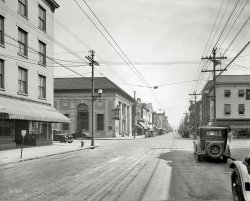
- Virginia Excell: 1942
- ... town, East Liverpool OH, caught my eye. I'm a native of Pittsburgh PA but my father's family history is based in Lisbon OH, Columbiana ... Posted by Dave - 11/11/2013 - 10:29am -
